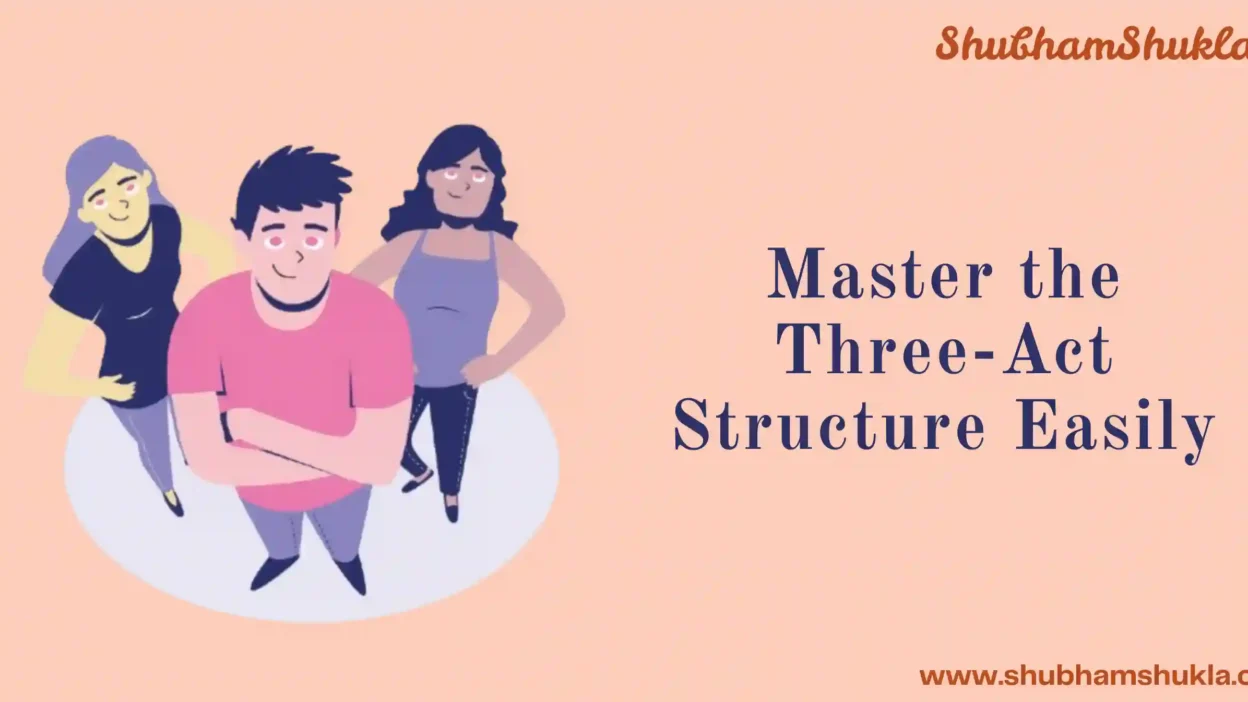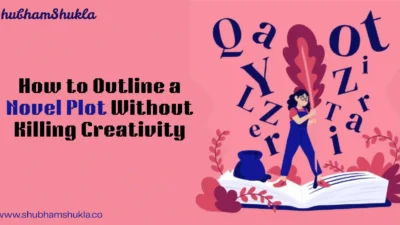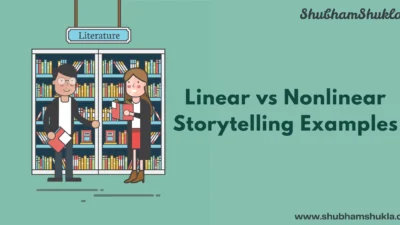Let’s be honest, writing a novel can feel like trying to build a house without blueprints. You’ve got characters whispering in your ear, scenes popping into your head at 2 a.m., and maybe even an ending… but how do you connect it all? That’s where the three-act structure for beginners comes in.
Think of it as your storytelling skeleton, just sturdy enough to hold everything together, but flexible enough for your creative muscles to do their thing.
Whether you’re plotting your first novel or just looking to finally finish that dusty draft in your drawer, this guide will walk you through the classic three-act structure in a simple, warm way. So grab your favorite beverage, and let’s talk about it.
- Act One: The Setup — Where It All Begins
- Act Two: The Confrontation — Welcome to the Messy Middle
- Act Three: The Resolution — Bringing It Home
- Why the Three-Act Structure Works for So Many Stories
- Tips for Making the Structure Your Own
- Final Thoughts: You Don’t Have to Be Perfect—Just Honest
- FAQ: Three-Act Structure for Beginners
Act One: The Setup — Where It All Begins
In the three-act structure for beginners, Act One is your story’s foundation. This is where you introduce the world, set the tone, and most importantly, let readers meet your protagonist. We want to see what “normal” looks like for them before you flip it upside down.
Every good setup leads to an inciting incident—the moment that yanks your character out of their everyday life. In The Hunger Games, it’s when Prim’s name is drawn and Katniss volunteers.
In The Hobbit, it’s the arrival of Gandalf and the dwarves at Bilbo’s door. These moments aren’t just dramatic—they’re the spark that lights the fire.
As a writer, don’t be afraid to spend time here grounding us in your character’s world. But be careful not to linger too long. The magic happens once your character steps into the unknown.
Act Two: The Confrontation — Welcome to the Messy Middle
If Act One is the calm, Act Two is the storm. This is where things get complicated—in the best way. Your character is out of their comfort zone, chasing a goal, and encountering roadblocks at every turn.
In the three-act structure for beginners, Act Two usually takes up the biggest chunk of your story. It’s the space for emotional growth, tension, and those juicy plot twists we all love.
One helpful trick? Break it into two parts. The first half escalates the conflict. The second half—often called the midpoint—introduces a twist or revelation that changes the stakes.
Take To Kill a Mockingbird: the courtroom scenes and the revelations about Boo Radley deepen our understanding of justice, innocence, and fear. It’s not just about plot; it’s about what the plot reveals about the people in it.
This is also where your characters should struggle. They don’t always make the right decisions (and they shouldn’t). Let them stumble. That’s how they grow—and how your readers connect.
In my own experience…
…I found that outlining Act Two felt like wrestling fog. I’d know where my story started and ended, but that middle stretch?
Chaos. Eventually, I learned to focus on the emotional journey—what my protagonist feels and learns—instead of just the external events.
Once I did that, the plot started to flow more naturally. My advice? Don’t obsess over getting every scene “right” on the first try. Just get the heart of it down, and shape it later.
Act Three: The Resolution — Bringing It Home
Now it’s time for everything to pay off. Act Three in the three-act structure for beginners is where the big showdown happens—the climax. But it’s more than just fireworks. It’s where your character proves they’ve changed, learned, or failed to. Either way, it should feel earned.
The climax should be emotionally satisfying, even if it’s tragic. In The Fault in Our Stars, we know where the story is headed, but it still hits hard because of how beautifully the journey is handled.
After the climax comes the resolution. This is your chance to tie up loose ends and show the aftermath of the choices your characters made. Don’t rush it. Let readers linger a bit. Let the emotions land.
Why the Three-Act Structure Works for So Many Stories
One of the biggest reasons the three-act structure for beginners is such a powerful tool? It mirrors how we live stories.
Think about any challenge you’ve faced: there was a beginning (when you realized the challenge), a middle (where you struggled and learned), and an end (where you either overcame it or didn’t).
We’re hardwired to crave that arc. It’s why this structure shows up everywhere—from Shakespeare to Pixar.
Even when a story feels unique or experimental, it often still has those three underlying beats: setup, escalation, and payoff. Learning to use this structure doesn’t limit your creativity—it guides it.
Tips for Making the Structure Your Own
If you’re worried the three-act structure for beginners might feel too “formulaic,” don’t be. It’s not about forcing your story into a box—it’s about understanding the shape of narrative so you can mold it to your voice.
Here are a few quick tips:
- Write your ending first. Sometimes knowing where your character ends up makes it easier to chart their path.
- Use beat sheets or index cards. They help you visualize story movement.
- Study your favorite books. Break them into acts. You’ll be amazed how often they follow this flow, even when it doesn’t feel obvious.
Final Thoughts: You Don’t Have to Be Perfect—Just Honest
Starting a novel is scary. Finishing one? Even scarier. But using the three-act structure for beginners can make the journey feel a lot more manageable. It gives you direction without stealing your voice.
Don’t let structure intimidate you. Embrace it like a trail map—it won’t tell you how to feel every step of the way, but it’ll keep you from getting completely lost in the woods.
So, it starts to get messy. Get excited. Try things. And remember: you’re telling a story only you can tell.
FAQ: Three-Act Structure for Beginners
Q1: Do all successful novels follow the three-act structure?
Not exactly—but most stories reflect it in some form. It’s popular because it works, not because it’s required.
Q2: Can I use this structure for short stories or novellas?
Yes! Just compress the timeline. The same beats apply, but everything moves quicker.
Q3: What’s the most important part to get right?
Honestly? The emotional arc. Plot without feeling falls flat. Make us care about your character’s journey.
Q4: Do I need to outline everything before I write?
Not at all. Many writers discover the structure as they draft. Try what works best for you.



